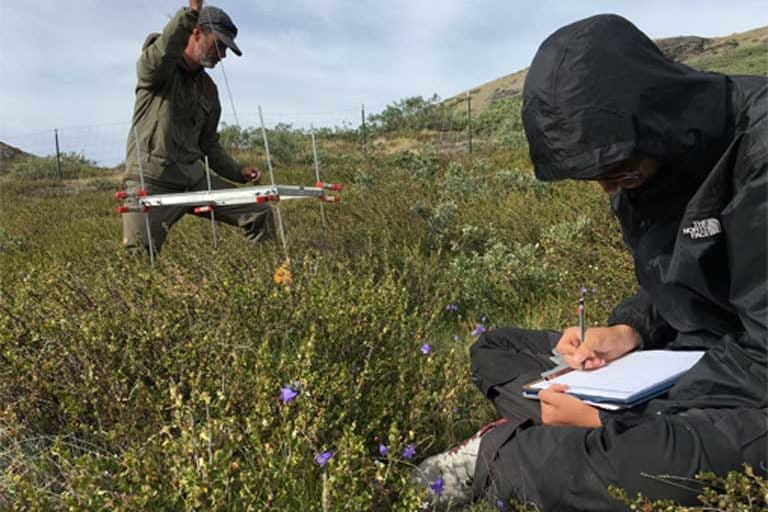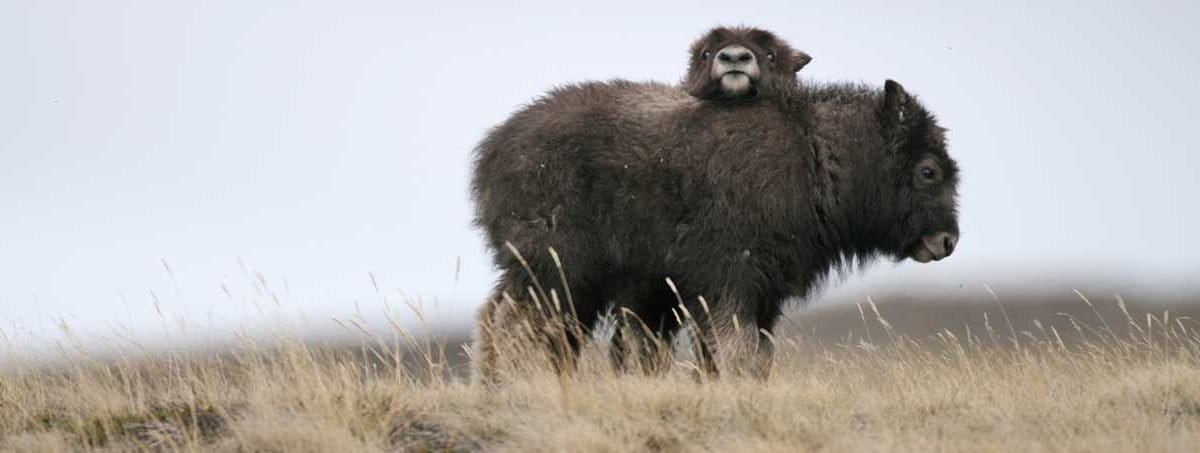- As representatives of the world’s nations gather in Madrid at COP 25 this week to discuss global warming policy, a comprehensive new report shows how climate change is disproportionately affecting the Arctic and Antarctic — the Arctic especially is warming tremendously faster than the rest of the world.
- If the planet sees a rise in average temperatures of 2 degrees Celsius, the polar regions will be the hardest hit ecosystems on earth, according to researchers, bringing drastic changes to the region. By the time the lower latitudes hit that mark, it’s projected the Arctic will see temperature increases of 4 degrees Celsius.
- In fact, polar regions are already seeing quickening sea ice melt, permafrost thaws, record wildfires, ice shelves calving, and impacts on cold-adapted species — ranging from Arctic polar bears to Antarctic penguins. What starts in cold areas doesn’t stay there: sea level rise and temperate extreme weather are both linked to polar events.
- The only way out of the trends escalating toward a climate catastrophe at the poles, say scientists, is for nations to begin aggressively reducing greenhouse gas emissions now and embracing sustainable green energy technologies and policies. It remains to be seen whether the negotiators at COP 25 will embrace such solutions.

As delegates from 197 member states convene in Madrid, Spain, this week for the twenty-fifth annual United Nations Climate Change Conference (COP 25) the world’s polar scientists are sounding the alarm in a new report over the rapidly changing Arctic and Antarctic regions.
In the last decade alone, the Arctic warmed 0.75 degrees Celsius (1.35 degrees Fahrenheit). In contrast, it took 137 years for the entire Earth to warm nearly that same amount, 0.8 degrees Celsius (1.44 degrees Fahrenheit).
Subsequently, the region has undergone a significant transformation as sea ice melts, permafrost thaws, and wildfires burn. Cold-adapted species, like polar bears and walruses, now face an uncertain and perilous future. In the decades to come, their home habitat may be virtually unrecognizable.
“It’s too late to prevent dangerous climate change impacts because we’re already seeing them, and the amplified impacts in the Arctic drive that home,” Michael Mann, a renowned climate scientist, told Mongabay. But he says it is still possible to avoid catastrophic warming of more than 1.5 degrees Celsius (2.7 degrees Fahrenheit). “It will require a dramatic decrease in global carbon emissions of more than 7 percent per year for the next decade, and a primary goal of COP 25 must be to achieve those reductions.”
In a comprehensive Science Advances report published this week, an international team of researchers, including Mann, documented the far-ranging effects of warming in both polar regions, on land and at sea. “Many of the changes over the past decade are so dramatic they make you wonder what the next decade of warming will bring,” said Eric Post, lead author of the paper and a University of California Davis professor of climate change ecology.

In addition, researchers examined the potential consequences for the polar regions as the planet moves ever closer to 2 degrees Celsius (3.6 degrees Fahrenheit) of warming above the 1981-2005 baseline mean. By the time the lower latitudes hit that mark, it’s projected that the far more rapidly warming Arctic will have seen annual temperature increases of 4 degrees Celsius (7.2 degrees Fahrenheit), rocketing up to 7 degrees Celsius (12.6 degrees Fahrenheit) increases in the boreal winter.
Though temperatures have been more stable at the South Pole, Antarctica is at the dawn of a new climate change-influenced era. It’s projected that the frozen continent will reach 3 degrees Celsius (5.4 degrees Fahrenheit) of warming in the austral winter (summer in the Northern Hemisphere), far outpacing warming in the tropics and temperate zones.
“Under a business-as-usual scenario, the Earth as a whole may reach that [2 degrees Celsius] milestone in about 40 years,” said Post. “But the Arctic is already there during some months of the year, and it could reach 2 degrees Celsius warming on an annual mean basis as soon as 25 years before the rest of the planet.”
Indeed, many of the changes once forecast for far in the future for the Arctic are occurring well ahead of schedule. Ice experts once believed that the Arctic Ocean wouldn’t experience ice-free summers until between 2030 and 2050, with some older predictions pushing that out as far as 2070. But that date has already been revised downward to a “more likely” 2030, linked strongly to whether or not greenhouse gas emissions are curtailed and how quickly. New carbon cuts are largely dependent on what happens diplomatically in Madrid, where many analysts are pessimistic over major policy breakthroughs.
Sea ice in the Arctic is declining in every month of the year, with the largest losses seen in late summer, though other seasons are seeing loss speed up. In Antarctica, sea ice extent increased slightly between 1978 and 2015, but now that tide may be turning. In the austral autumns of 2017 and 2018, sea ice extent reached record or near-record lows.

The changes in the polar regions aren’t contained at the ends of the Earth; they’re already affecting the lower latitudes. As glaciers and on-land ice sheets melt and calve into the ocean, global sea level will rise. West Antarctica’s Thwaites Glacier is a particularly noteworthy melt candidate, as the glacier is now losing twice as much ice to the ocean as it was in the 1990s. It’s expected that due to the rapid calving of Thwaites, we could see an additional 1.2 meters (3.9 feet) of sea level rise within two centuries.
Since 2001, the United Nations Intergovernmental Panel on Climate Change’s projected sea level rise contributions from ice sheets have repeatedly been boosted higher due to accelerated polar warming. Current overall sea level rise has occurred at a mean rate of 1.8 millimeters per year for the past century, but more recently at rates estimated near 2.8 to 3.1 millimeters per year (1993-2003).
“Loss of the summer sea ice and thinning of winter sea ice will generate tipping points in weather and in ecosystems,” said James Overland, an Arctic oceanographer with the National Oceanic and Atmospheric Administration (NOAA). “We need to do everything now to avoid this case.”
Researchers think that declining Arctic sea ice is increasingly fueling extreme weather in the United States, Europe and elsewhere across the temperate zone. The California drought which ran from 2011 to 2017, for example, has its origins, in part according to researchers, in the changing Arctic.
“The key messages here are that the polar regions of the planet, and the Arctic in particular, provide a laboratory for studying the sorts of environmental impacts of warming we will see in lower latitudes, the U.S. and Europe if we fail to act on climate,” said Mann.
Given that the polar regions are home to a number of cold-adapted, endemic species, such sudden and rapid change threatens their long-term survival. The well televised plight of polar bears has presented that species as a clear loser to climate change. As ice habitat disappears, the bears must expend more energy traveling between less stable sea ice or open water in search of food, and face nutritional stress during summer fasting. The pinnipeds (seals and other semiaquatic mammals) which the bears feed on, too, could disappear. Pacific walruses, for example, are hauling out on spits of land by the thousands in the absence of ice, which often results in trampling deaths should the animals startle. Moreover, earlier spring sea ice break-up is stressing and killing off harp and ringed seal pups.
On land, much increased rain-on-snow events lock up green vegetation in ice, preventing caribou and reindeer from foraging during harsh winters. Ice-encrusted polar rangelands have led to the mass starvation of ungulates, most recently in Svalbard. In Russia’s Yamal Peninsula, 61,000 reindeer died between 2013 and 2014 due to one such episode, the new study notes.

To avoid total ecological catastrophe at the poles, the report’s authors say that the negative impacts of climate change will need to be reduced through “strengthened international cooperation and collaborative agreements.”
The primary goal of COP 25 will be to determine rules under Article 6 of the Paris Agreement for creating carbon markets among nations, cities, and corporations as a way to incentivize emission-reduction strategies. Given the dire state of the planet, however, many analysts believe this focus is too narrow and that the climate crisis requires far more aggressive action. Nations especially need to step up by increasing and adhering to their Paris Climate Agreement goals.
Instead, things are going in the reverse direction, with almost every nation falling well short of their original Paris greenhouse gas reduction pledges. Last month the Trump Administration began the year-long process to formally withdraw the United States from the Paris Agreement, leaving the fate of the Arctic, Antarctic and ultimately the planet, in jeopardy.
Even if carbon emissions were miraculously contained tomorrow, the polar regions would still continue to change. “There is a delay between temperature increases and the melting of major ice sheets,” said Overland. “Though the sea level rise rate is small for the next few decades, it kicks in strongly after 2040 and may continue to increase despite mitigation.”
Speaking at the opening of COP 25 on Monday, UN General Secretary António Guterres said: “We stand at a critical juncture in our collective efforts to limit dangerous global heating. By the end of the coming decade we will be on one of two paths. One is the path of surrender, where we have sleepwalked past the point of no return, jeopardizing the health and safety of everyone on this planet.… The other option is the path of hope. A path of resolve, of sustainable solutions.… That is the only way to limit global temperature rise to the necessary 1.5 degrees by the end of this century.”
Mann, despite all the bad news from North and South, says he’s “hopeful that we’ll act in time to avert the worst impacts of climate change, something our review makes clear is still possible.”
Banner image: Muskox calves in Greenland. Young animals are especially vulnerable to climate change-driven extreme weather, such as rain-on-snow events which can cover polar rangelands with ice leading to mass starvation. Image by Eric Post, UC Davis.
FEEDBACK: Use this form to send a message to the author of this post. If you want to post a public comment, you can do that at the bottom of the page.
